Yellowstone is the United States’ first national park, and in my opinion one of the finest protected areas in the world. It’s also one of the most studied: Yellowstone researchers have published important studies on everything from fire ecology to the role of large predators to the origins of life.
But many serious naturalists give the park a wide berth – they want nothing to do with the circus-like atmosphere of Old Faithful or the famous “bear jams” (when traffic stops for wildlife). Which is a pity. Yellowstone remains one of the great places in the world to see creatures large and small. But knowing where to focus your efforts can help.
Here are five places every serious naturalist should check out in the nation’s first national park. (And please share your own favorite spots as well).
-
The Lamar Valley
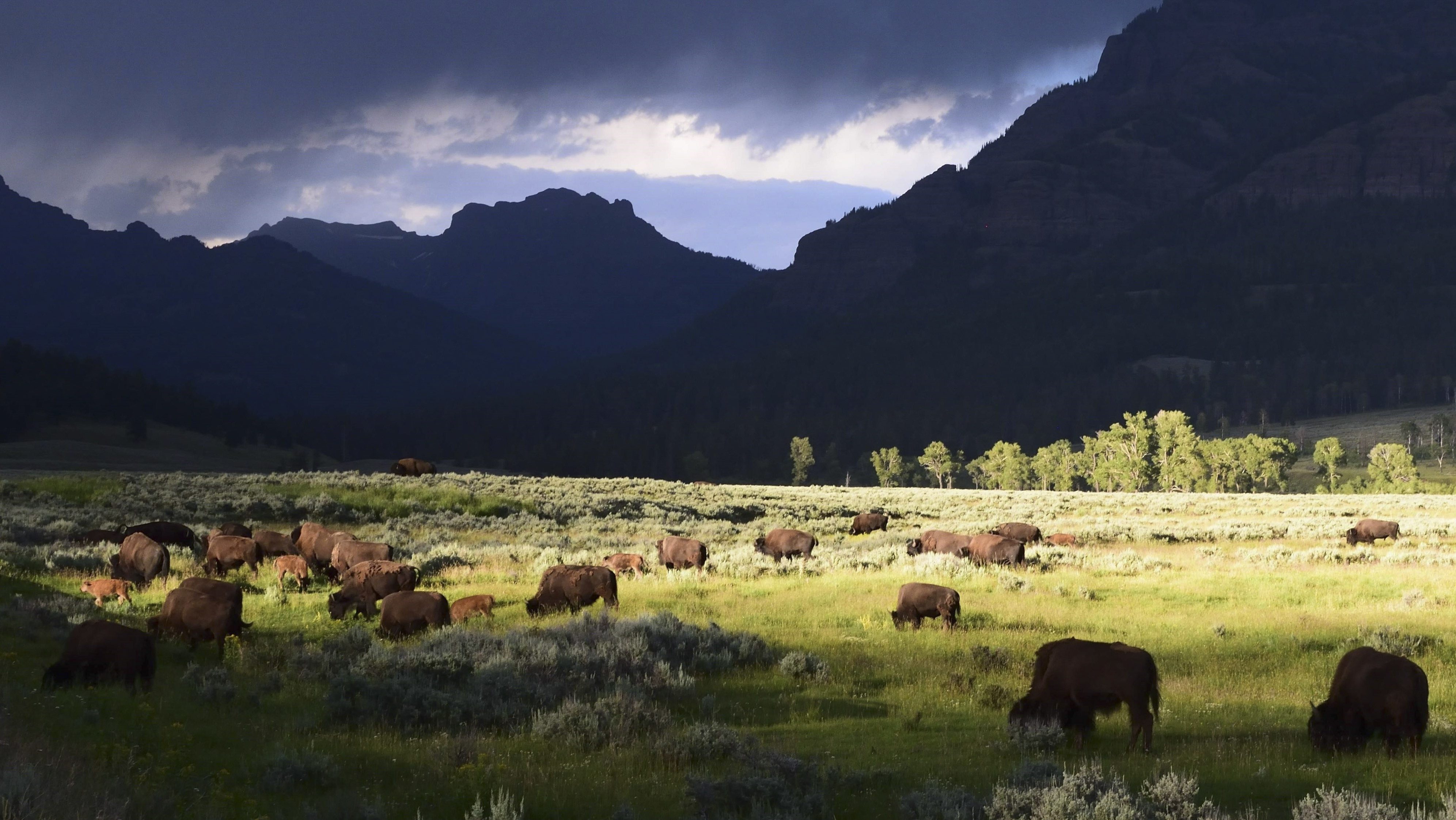
Bison browse in the Lamar Valley. © Zachary Morton/TNC Photo Contest 2019 The Lamar Valley has it all: thundering herds of bison, grizzly bears digging for ground squirrels, badgers and coyotes sneaking through the sagebrush, pronghorn standing alert. It’s the best place to see large, wild beasts in the “lower 48.”
And since 1995, gray wolves have been restoring the valley (and indeed, the park) to its full glory. Wolves were eradicated from the park in the early 1900s, under the mistaken belief that predators were harmful to populations of “beneficial animals.” Elk, with little to fear, began lolly-gagging in streams, pounding vegetation much like grazing livestock.
When wolves returned, elk couldn’t loiter – they had to stay on the move. This allowed aspens and other streamside vegetation to recover, which in turn drew back beavers, which in turn created favorable habitat for birds and native fish. Large predators have dramatic effects on ecology, it turns out.
And the Lamar Valley is now the place to observe wolves. Brigades of wolf watchers keep track of area wolf packs through spotting scopes, and they’re willing to share the latest with Yellowstone newbies. Even if the wolves aren’t around, there’s always something happening in Lamar: spend an afternoon there and you’ll enjoy a place where predator and prey still move to ancient rhythms
-
The Yellowstone River
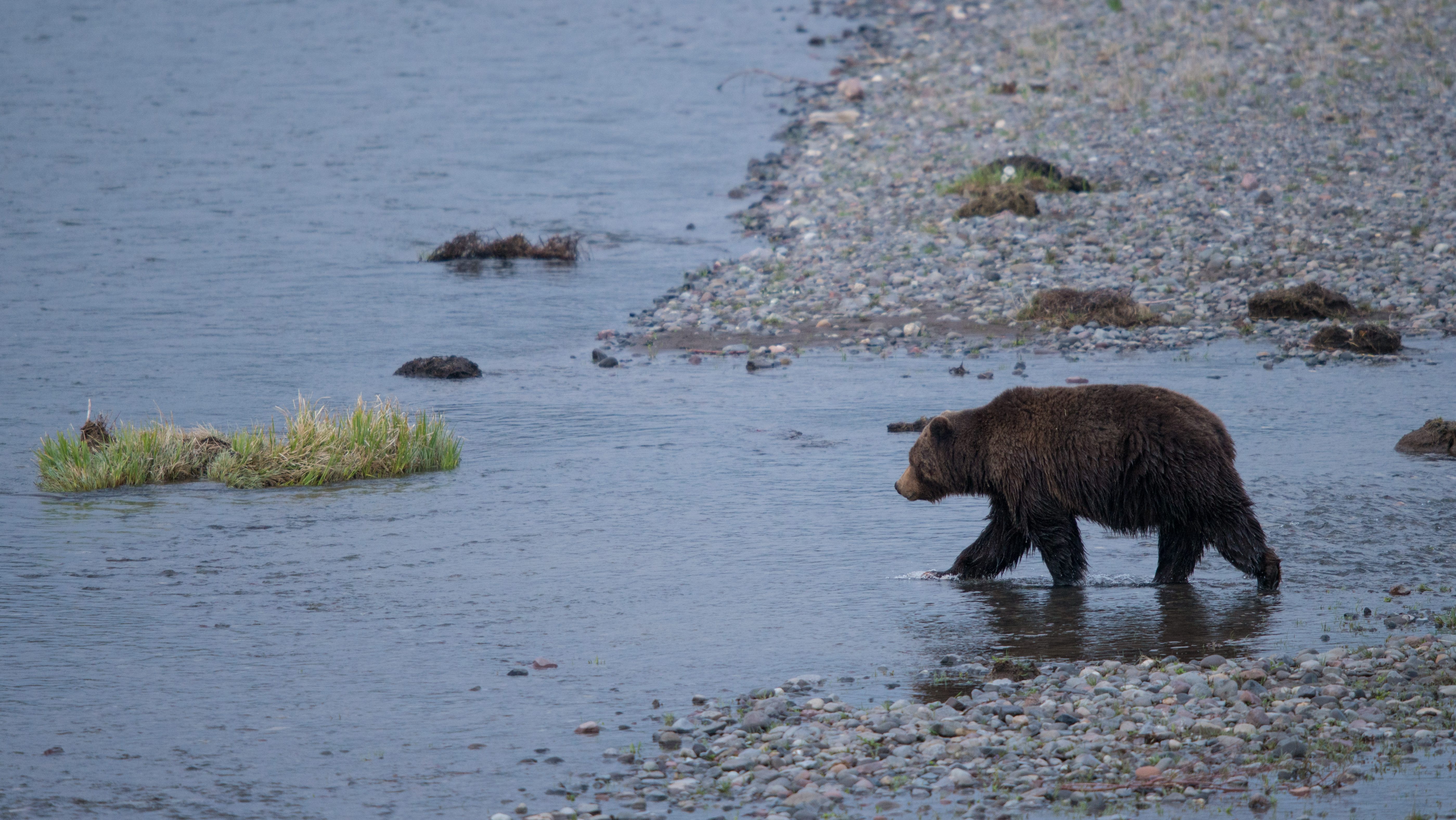
A grizzly in Yellowstone. © Scott Copeland The Yellowstone River flows through some of the park’s most impressive scenery, including the photogenic Grand Canyon of the Yellowstone. It’s also home to one of the most beautiful fish in the country, the Yellowstone cutthroat trout (the name derives from a bright red slash below its mouth that indeed looks like a “cut throat”).
Cutthroats migrate out of Yellowstone Lake to the river to spawn. This once made the river one of the great fly fishing destinations in the world. Those fish also provided a calorie-rich buffet line for grizzly bears, river otters, ospreys, bald eagles and many other species.
That changed dramatically thirty years ago, when someone illegally dumped lake trout, a non-native species, in Lake Yellowstone – a mindless act of ecological vandalism. The cutthroat populations crashed – some estimates say by 99 percent.
Today, efforts are underway to use commercial fishing nets to remove the voracious lake trout from the lake. It may hold the best promise for restoring Yellowstone cutts.
And you can still enjoy natural spectacle along the Yellowstone: the Hayden Valley is a spectacular place to see grizzly bears and other wildlife.
To see and photograph a Yellowstone cutthroat run up close, head to Trout Lake, where in early summer the trout run up a tiny stream to spawn. They sometimes attract hungry river otters who will gnaw on trout just feet away from visitors – a stunning photographic opportunity.
-
Tower-Roosevelt
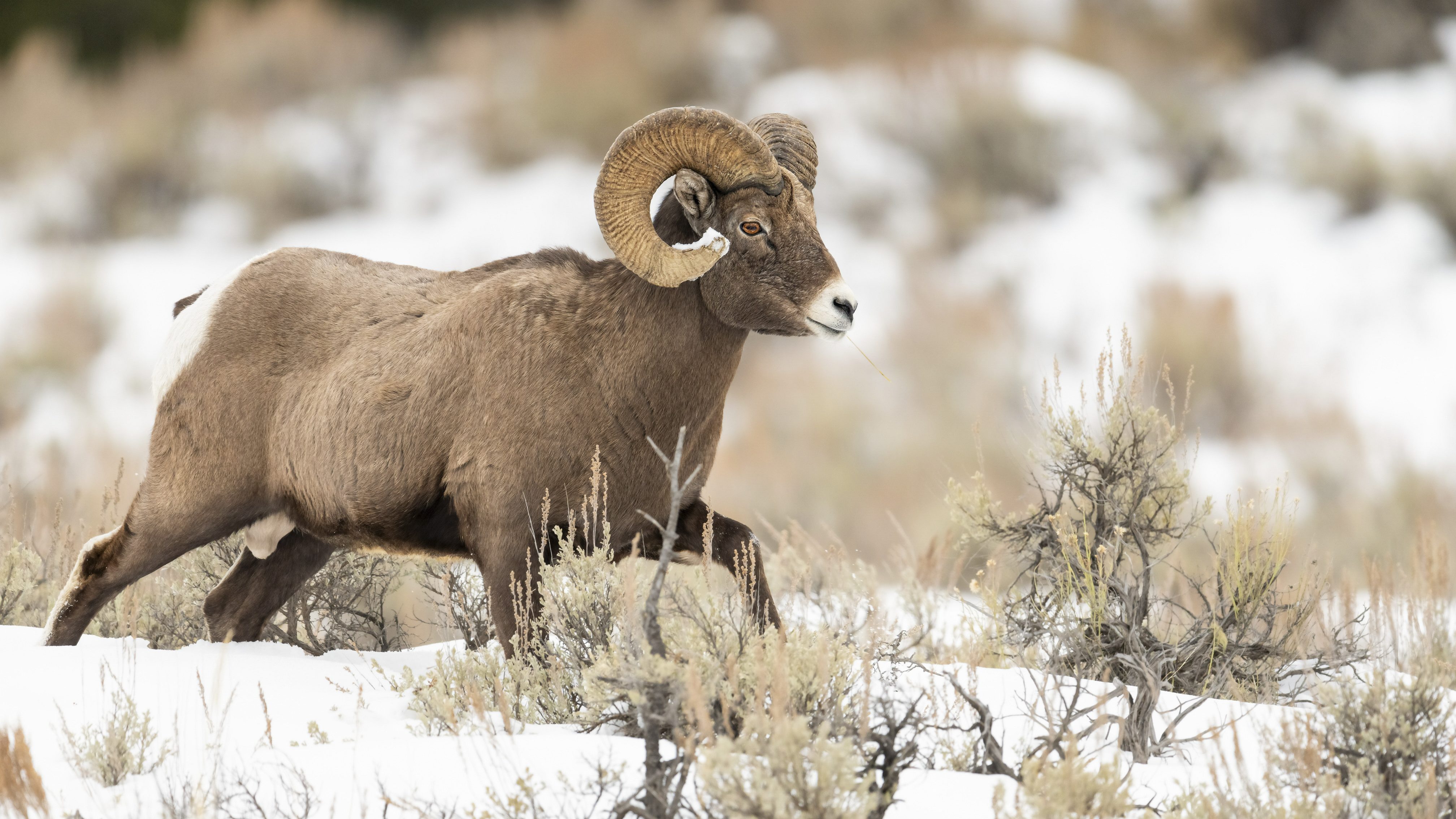
A bighorn sheep. © David Glatz /TNC Photo Contest 2019 The imposing cliffs in the Tower area are a great place to see bighorn sheep in action. Impossibly steep rock faces pose no problem to bighorns, who use the terrain to avoid and evade predators.
You can sometimes see bighorns outlined on the canyon walls in this area. But if you don’t see any, carefully scan the rocky cliff faces. Oftentimes, a bighorn or two is hanging out on a rocky ledge. You’ll find yourself wondering how they ever got there in the first place.
Watch closely and you might catch some the bighorns scampering over their rocky home. Or better: one time I was able to watch a bighorn ewe give birth to a lamb. She licked it off as it made its first attempt to stand.
-
Geyser Basins
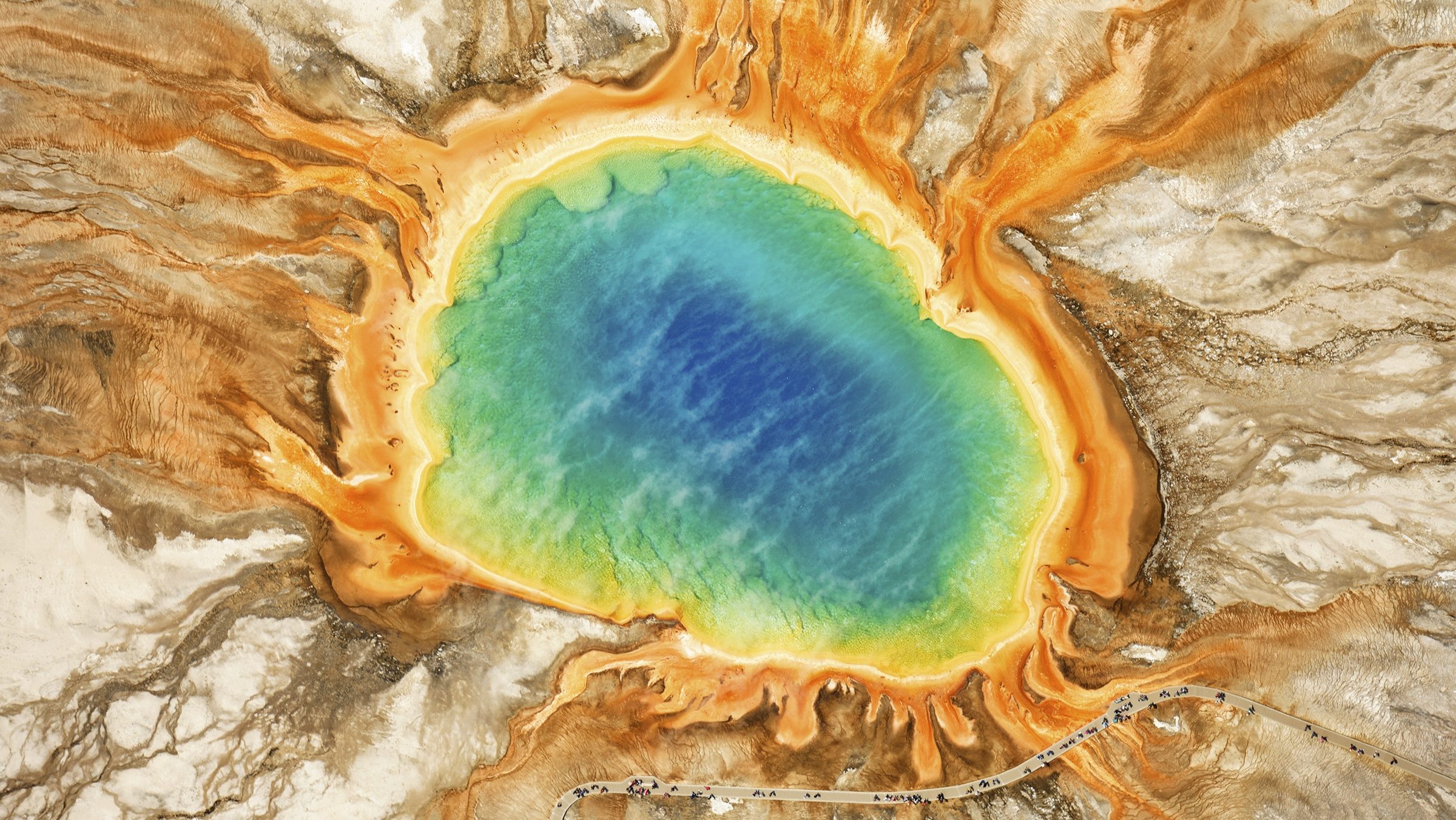
Yellowstone’s grand prismatic spring. © Jassen Todorov /TNC Photo Contest 2018 Yellowstone has arguably the greatest array of geothermal features, with 10,000 geysers, mud pots, fumaroles and hot springs. These might seem like unlikely places to look for wildlife. And indeed, most scientists always assumed that hot water, sulfuric acid and other extreme conditions were far too hostile to support life.
In 1966, Dr. Thomas Brock discovered an organism, Thermus aquaticus, in Yellowstone’s hot springs. Since then, the geothermal features have been found to have a rich array of bacteria and archaea, as well as algae, protozoa and fungi. Indeed, the biodiversity found in and around geothermal features far exceeds what you’ll see in the Lamar Valley.
These “extremophiles” are adapted to live in conditions like near-boiling water, high alkalinity and high acidity. Many scientists believe they may be similar to the first living organisms on earth. These microbes may also hold important keys for medicine and energy production.
I’ll not suggest that seeing a microbe is the same as seeing a grizzly bear, but the cyanobacterial mats and other colorful, living formations are well worth photographing. And the National Park Service has done a great job of providing interpretive materials so you know what you’re seeing.
-
Flat Ranch Preserve
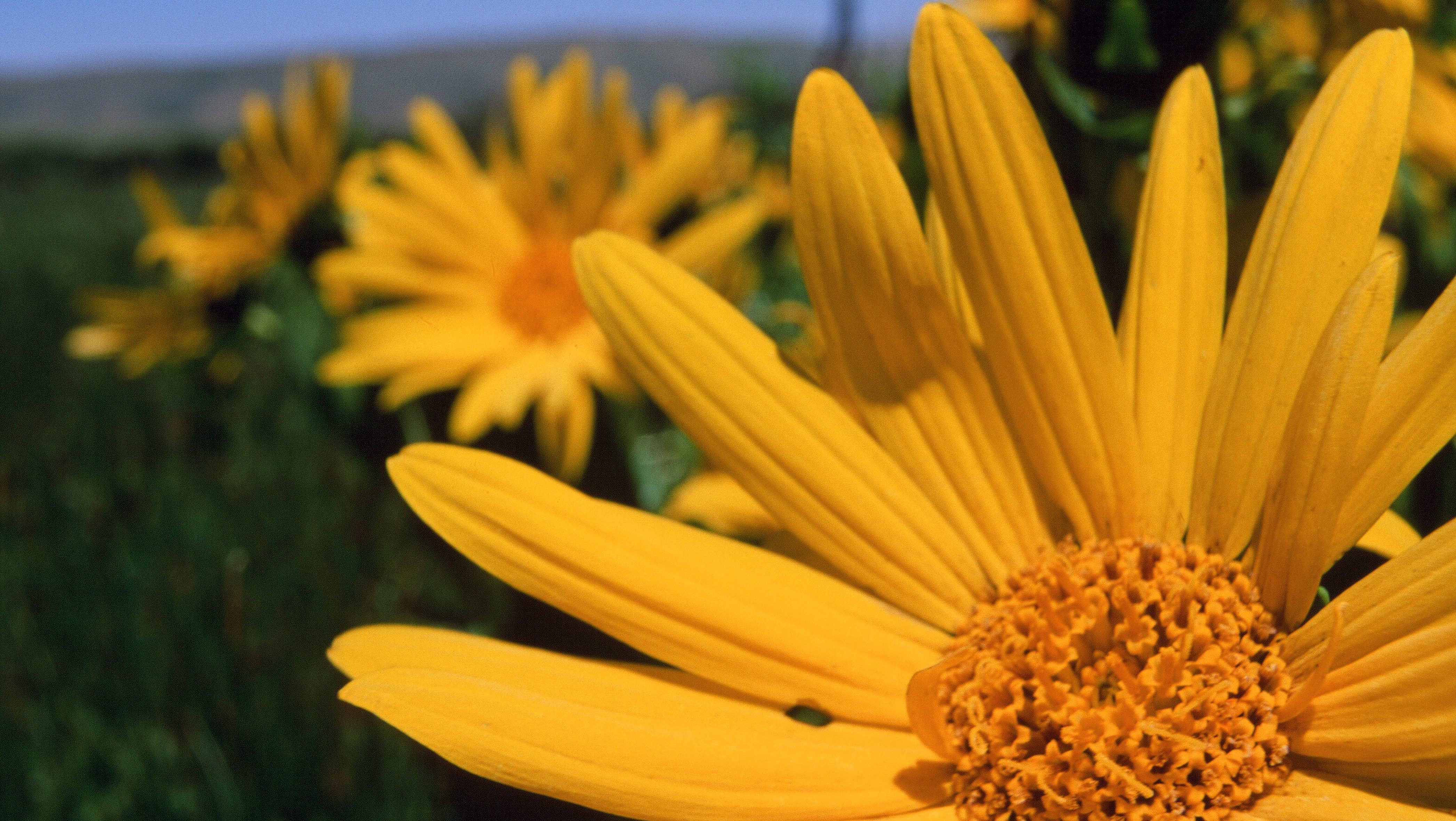
Mule’s ear flowers at Flat Ranch Preserve. © Edward Orth The Nature Conservancy’s Flat Ranch is a nature preserve and working cattle ranch located 15 miles west of West Yellowstone, in Macks Inn, Idaho, just off Highway 20. True, it’s not in the park. But Yellowstone’s wildlife does not recognize park boundaries, which were established to protect scenery and geology more than wild animals.
The land surrounding the park – called by conservationists the Greater Yellowstone Area – is vitally important for animals that migrate outside the park to escape harsh winter conditions. Many times wildlife species migrate through working ranches, which is why the Conservancy is working to protect these areas from development.
Flat Ranch Preserve illustrates the importance of protecting these corridors. Pronghorn, moose, elk and even grizzly bears often move through the property. For naturalists, it’s also one of the best places in the region to go birding: the preserve has one of the largest nesting populations of long-billed curlews in the country and many grassland species can often be spotted.
Preserve volunteers will usually have a spotting scope set up so visitors can see sandhill cranes and pronghorns. Since a restoration project three years ago, the fishing for rainbow trout and native Yellowstone cutthroat trout is excellent. There are educational talks on most Wednesdays and Saturdays throughout the summer.
And then there are the flowers: spectacular blooms of mule’s ear and others paint the “flats” a rich palette of colors.
Yellowstone is a spectacular park, and seeing herds of bison, bears and wolves, huge bull elk and other wildlife gives the idea that this place is perfectly protected. But these critters need room to roam. Stop by the Flat Ranch and see for yourself the importance of keeping working lands working — and learn how you can help protect the entire Yellowstone area for future generations to enjoy.




Thank you so much for this article. I’ve never been to Yellowstone and this was so very informative. I just discovered wildlife Photography is my passion but not knowing where to go (and nervous about traveling so far from home) in this beautiful place is intimidating. Reading this helped so much. I would be so grateful for any other suggestions you may have, especially regarding lodging. I plan to visit Sept 2022. So excited I can hardly stand it.
Hi mates, its fantastic piece of writing on the topic of educationand fully explained, keep it up
all the time.
If a group of naturalist planned a tour there who could guide us to see these places and avoid the “bear Jams” ? How long would a group need to plan in the area and what is the best time of year for a tour? What would be a maximum size group?